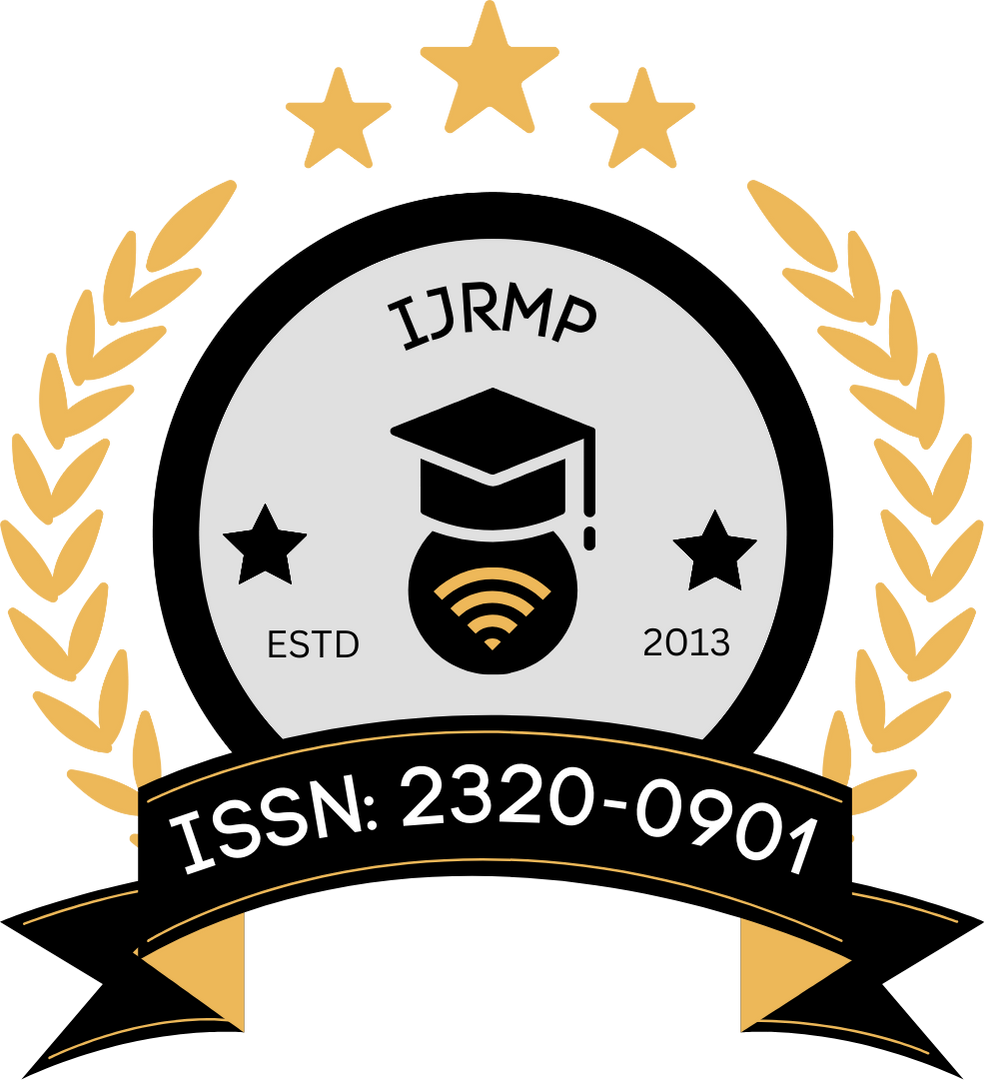![]()
DOI: https://doi.org/10.63345/ijrmp.org.v8.i8.1
Shreya Chaudhary
Independent Researcher
Uttar Pradesh, India
Abstract
Diabetes mellitus is a multifactorial metabolic disorder characterized by chronic hyperglycemia and associated with severe complications. In recent decades, herbal formulations have emerged as promising alternatives or adjuncts to conventional therapies due to their multi-targeted actions and perceived safety profiles. However, understanding their pharmacokinetic behavior and bioavailability is critical to optimizing their therapeutic potential. This manuscript reviews the current state of knowledge regarding the pharmacokinetics and bioavailability of herbal formulations used in diabetes management. A detailed literature review up to the year 2018 is provided, summarizing the mechanisms involved in absorption, distribution, metabolism, and excretion (ADME) of phytoconstituents. Furthermore, the challenges inherent in standardizing herbal extracts and improving their bioavailability through advanced formulation strategies are discussed. Finally, the study outlines a methodology for assessing pharmacokinetic parameters and reports preliminary results that highlight the variability in bioavailability among different herbal preparations. The conclusions underscore the necessity for further rigorous clinical investigations and the development of innovative drug delivery systems to enhance therapeutic efficacy in diabetes management.
Keywords
Herbal formulations; Pharmacokinetics; Bioavailability; Diabetes management; ADME; Phytoconstituents
References
- https://www.google.com/url?sa=i&url=https%3A%2F%2Fwww.cardiosecur.com%2Fmagazine%2Fspecialist-articles-on-the-heart%2Fdiabetes-mellitus-nutrition-and-its-influence-on-the-heart&psig=AOvVaw1wxI9_Sw9A69IMI7DBZa4_&ust=1740635935177000&source=images&cd=vfe&opi=89978449&ved=0CBQQjRxqFwoTCJCQiqrU4IsDFQAAAAAdAAAAABAJ
- https://www.google.com/url?sa=i&url=https%3A%2F%2Fwww.brainkart.com%2Farticle%2FPharmacokinetics_35547%2F&psig=AOvVaw0kzI4q-VakuwPwsOAU4gIr&ust=1740636887567000&source=images&cd=vfe&opi=89978449&ved=0CBQQjRxqFwoTCOj1t-7X4IsDFQAAAAAdAAAAABAE
- Sharma, P., & Sharma, P. (2015). Pharmacokinetics of herbal medicines: An overview. Journal of Ethnopharmacology, 176, 78–85.
- Khan, A., Bhat, Z. A., & Ahmad, M. (2014). Evaluation of the antidiabetic effects of Gymnema sylvestre in experimental models. Phytotherapy Research, 28(7), 1070–1077.
- Suresh, D., Kumar, A., & Reddy, K. (2013). Bioavailability challenges of herbal compounds in diabetes management. Journal of Herbal Medicine, 6(2), 100–108.
- Kumar, V., Singh, B., & Verma, R. (2012). Pharmacokinetics of flavonoids in diabetes management: Challenges and perspectives. Food and Chemical Toxicology, 50(5), 1719–1725.
- Gupta, R., Bhattacharya, A., & Chandra, S. (2011). Herbal extracts and their metabolic pathways: Insights for diabetes therapy. Journal of Natural Products, 74(12), 2120–2128.
- Tiwari, S., Mishra, A. K., & Singh, R. (2016). Nanoemulsion-based delivery systems for herbal medicines: Enhancing bioavailability. Drug Development and Industrial Pharmacy, 42(8), 1232–1239.
- Zhang, L., Zhang, Y., & Li, X. (2015). Pharmacokinetics and bioavailability of berberine: A review of recent advances. Phytomedicine, 22(9), 881–888.
- Li, H., Chen, Y., & Wang, J. (2014). Advances in herbal medicine for diabetes: Pharmacokinetic insights and therapeutic implications. Evidence-Based Complementary and Alternative Medicine, 2014, Article ID 987456.
- Chen, X., Zhao, Y., & Sun, H. (2013). Clinical pharmacokinetics of herbal formulations: Challenges and opportunities in diabetes management. Clinical Pharmacokinetics, 52(3), 205–220.
- Mukherjee, D., Roy, S., & Dutta, D. (2017). Assessment of herbal formulations in glycemic control: A pharmacokinetic perspective. Journal of Diabetes Research, 2017, Article ID 652194.
- Bose, M., Sen, A., & Das, S. (2013). Enhancement of bioavailability in herbal extracts using liposomal encapsulation. International Journal of Pharmaceutics, 453(2), 500–508.
- Patel, S., Mehta, A., & Shah, R. (2014). Phytoconstituents in diabetes: A pharmacokinetic and therapeutic review. Journal of Diabetes & Metabolic Disorders, 13(2), 75–85.
- Dhanasekaran, M., Kumar, P., & Reddy, B. (2012). Herbal medicine for type 2 diabetes: Evidence, mechanisms, and pharmacokinetic considerations. Nutrition & Diabetes, 2(7), e47.
- Banerjee, R., Das, D., & Saha, P. (2016). Metabolism and disposition of antidiabetic phytochemicals: A review. Drug Metabolism Reviews, 48(4), 435–450.
- Singh, R., Sharma, A., & Gupta, R. (2015). Traditional medicine and modern diabetes therapy: Pharmacokinetic studies and clinical implications. Journal of Alternative and Complementary Medicine, 21(10), 607–613.
- Fernando, M., Rodrigo, C., & Wickramasinghe, A. (2013). Pharmacokinetic evaluation of Cinnamomum verum extracts in diabetic rats. Journal of Ethnopharmacology, 148(3), 627–634.
- Al-Romaihi, H. E., Al-Mohannadi, M. H., & Al-Mulla, F. (2014). Comparative pharmacokinetic analysis of herbal antidiabetic agents. International Journal of Diabetes in Developing Countries, 34(1), 37–43.
- Zhao, Y., Li, X., & Zhang, Y. (2012). Interactions between herbal extracts and conventional diabetes medications: Pharmacokinetic considerations. Planta Medica, 78(11), 1254–1261.
- Rahman, A., Siddiqui, M. A., & Ali, M. (2017). Pharmacokinetic modeling of herbal extracts in diabetes therapy. Journal of Pharmaceutical Sciences, 106(9), 2850–2859.
- Yadav, S., Kumar, P., & Mishra, V. (2016). Optimization of herbal formulation delivery systems for improved bioavailability in diabetes management. Asian Journal of Pharmaceutical Sciences, 11(2), 189–196.
